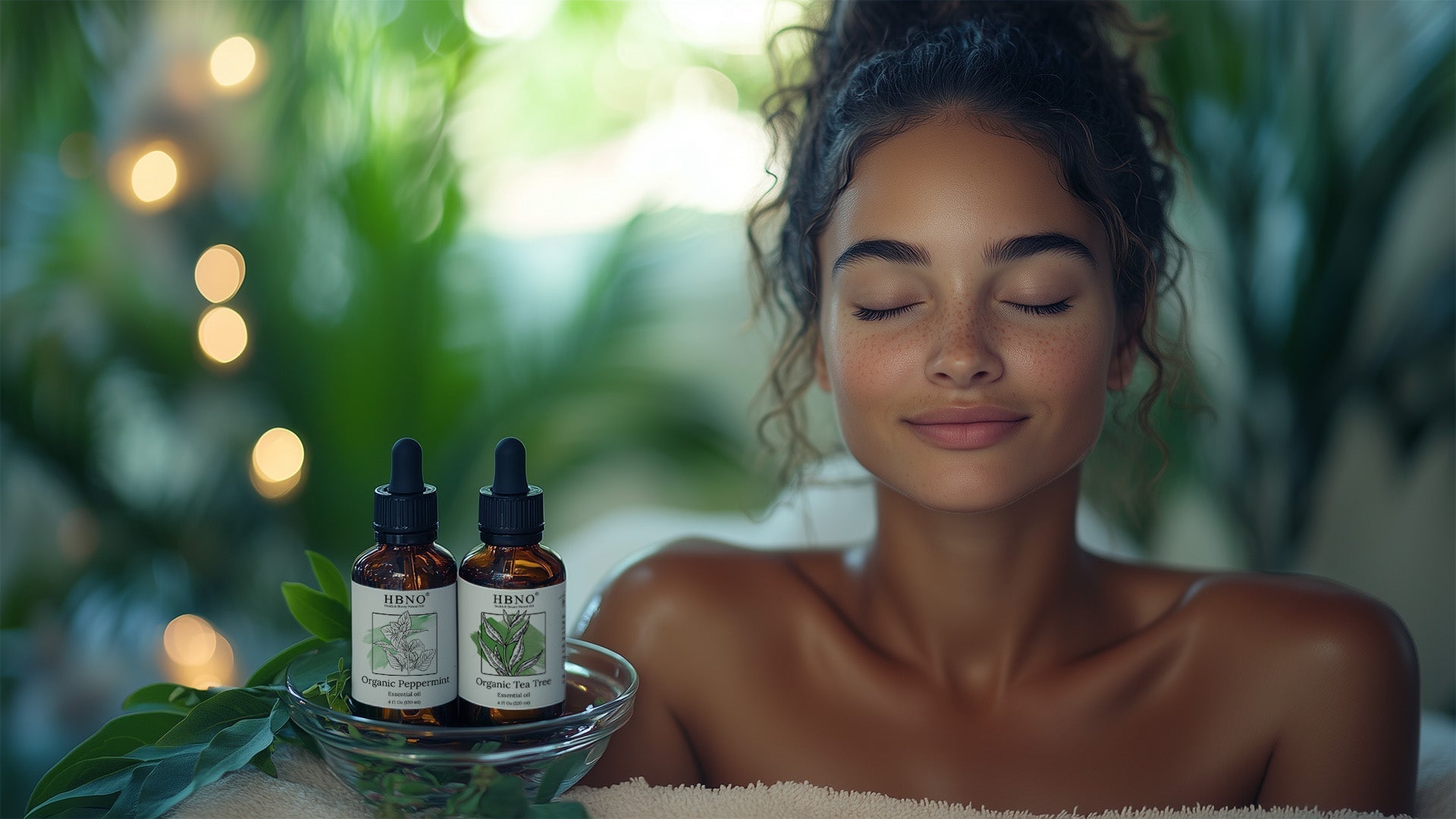
Peppermint and Tea Tree Oil for Hair Growth – Natural Hair Care
When it comes to hair growth, it's not one thing that causes it to grow. It's a whole mix of factors-like what you eat, your environment, if you are burnt out from , and even the products you put on your scalp and hair.
Among the various options out there, essential oils like peppermint oil and tea tree oil often pop up in conversations. These oils have been often a part of hair care routines for many people, especially for folks trying to tackle some common hair issues. The article explores the potential usages of these oils.
Potential Usages of Peppermint Oil for Scalp
First off, peppermint oil smells pretty strong, which means one may avoid using it on their scalp straight from the bottle. You may need to mix it with a carrier oil-think coconut, jojoba, or olive oil. A lot of people like to create a blend, apply it to their scalp, let it sit for a few minutes, and then wash it out.
There are also shampoos and hair masks out there that already have peppermint oil in them, nicely diluted so you don't have to worry about measuring. These products might be a great option if you're looking for something that might give your scalp a refreshing feel without the risk of buildup.
While it can not guarantee that peppermint oil might help in hair growth significantly, a clean scalp might set the stage for better hair quality. Lots of users say that after adding peppermint oil to their routine, their scalp becomes lighter and their hair looks better over time. However, the result may vary among users.

Tea Tree Oil for Tackling Scalp Issues
Various people believe that tea tree oil may help with pesky scalp flakes, dryness, or leftover gunk from styling products. It does not directly improve hair growth, but it might work as a key player in keeping your scalp clear.
People usually dilute tea tree oil with a carrier oil and apply it before washing their hair. Others might choose shampoos and conditioners that already contain some tea tree oil. The idea is that it might help reduce visible buildup on the scalp.
By keeping your scalp cleaner and more manageable, you might help your hair to grow better. If you struggle with an oily scalp or flakes, you might give a try to tea tree-infused products. However, be careful of potential side effects with such products.

Using Both Oils Together
Many folks like to mix both peppermint and tea tree oil in their hair care routine. A simple way to do this is to combine a small amount of each oil with a carrier oil, apply it to your scalp for a bit, and then wash it out.
Both oils are potent, so you don't want to go overboard or use them straight up without diluting. That could lead to irritation or dryness in your scalp, so be careful while using such essential oils. If you're not into DIY, there are plenty of ways people blend these oils in the right proportions, making them convenient for use.
These might be often good for use for weekly or bi-weekly scalp care sessions. The main goal here is to achieve a scalp that feels cleaner and less gunky-hopefully leading to hair that looks fuller. So, whether you go the DIY route or opt for pre-made products, incorporating these oils might just be the boost your hair needs.

Key Considerations When Using These Oils
Thinking about adding peppermint or tea tree oil to your hair care routine? Well, there are a few things you may need to keep in mind:
-
Patch Test First: You may need to do a little test on a small area before you go all in, especially since some people can experience side effects of peppermint oil and tea tree oil. It might be a simple way to avoid any nasty surprises or discomfort.
-
Consistency Matters: Just like with most personal care stuff, if you want to see some real changes, you may need to stick with it over time.
-
Less Is More: You might think, "More oil, better results," but overdoing it might actually lead to dryness or irritation, which is not what you want if you're trying to achieve those hair goals.
-
Tailor Your Choices: It's smart to pick oils that suit your scalp and hair type. Options like rosemary oil and tea tree oil for hair and scalp are popular for their cooling and clarifying benefits. If you've got a dry or delicate scalp, start with lower concentrations or chat with a hair care professional. It's better to stay safe than sorry.
Conclusion
Peppermint oil and tea tree oil are pretty popular when it comes to hair care, especially if you want a clean and manageable scalp. Now, these oils aren't magic potions that guarantee hair growth. But they might definitely become part of a routine that might help make your hair look fuller.
By keeping your scalp in check, tackling any flakiness, and cutting down on product buildup, a lot of folks find these oils may help in creating a consistent hair care routine. If you're curious about giving them a shot, just take it slow, always remember to dilute, and pay attention to how your hair and scalp react over time.
At the end of the day, it's not just about an instant makeover. It's really about fostering an environment where your hair care can do its best work-and that's often a crucial first step in any long-term hair journey. To get the most of such essential oils, buy from reliable sources, such as HBNO.